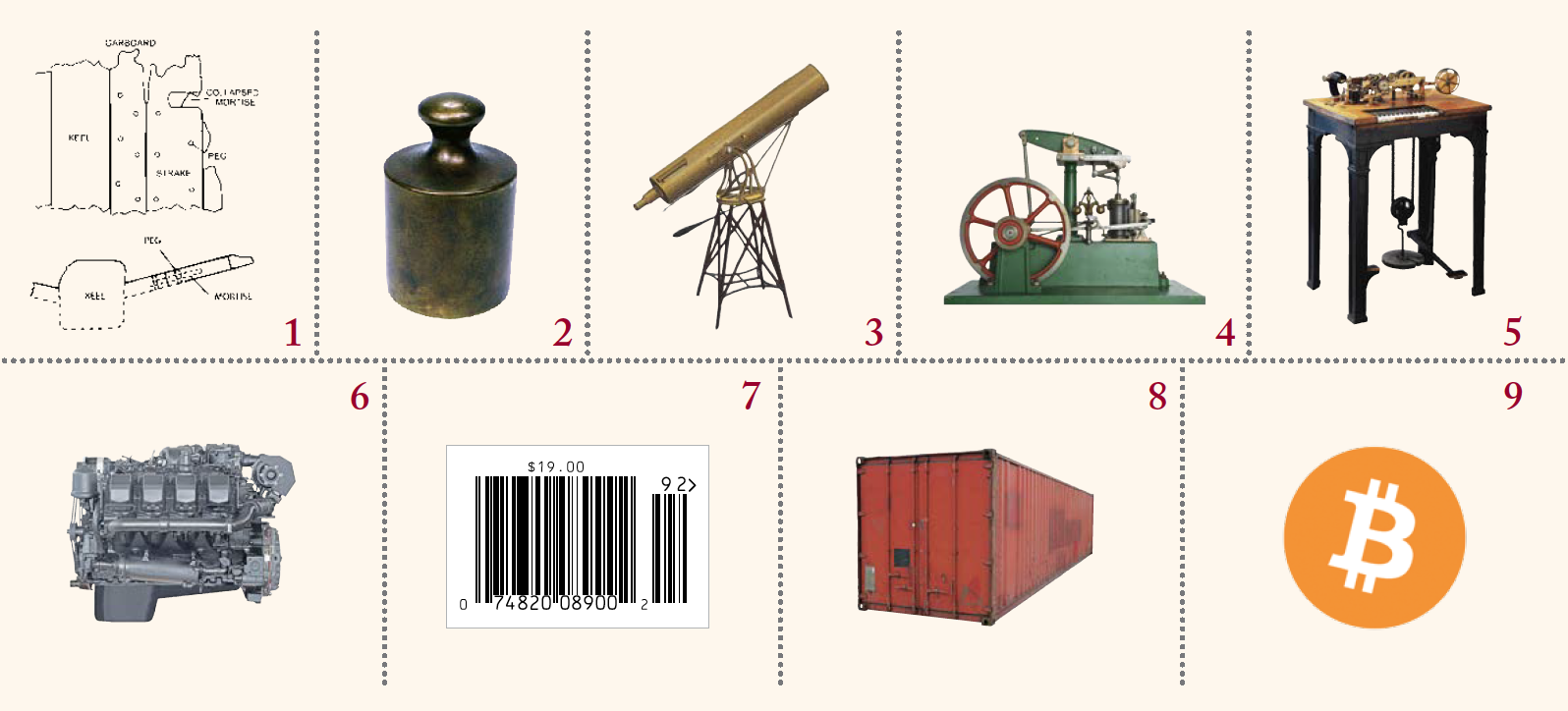1) Mortise-and-tenon joint
A merchant ship that sank off the coast of Uluburun, Turkey, around 1305 bc is the oldest known vessel to use this construction method. Though more labor-intensive than older techniques, these joints provide better structural integrity and water-fastness, allowing heavier loads and longer voyages. The technology spread far beyond the Mediterranean: in 2004 archaeologists discovered mortise-and-tenon fastenings on a first-century-bc boat in northern Vietnam.
2) Weight standard
After uniting China under the Qin dynasty in the middle of the third century bc, Shihuangdi implemented a standard unit of weight based on grains of millet, facilitating tax collection and domestic trade. The kilogram, developed as part of the metric system in the wake of the French Revolution and derived from the weight of water, is now used by 95 percent of the world’s population.
3) Telescope
Merchants in Venice used the first telescopes in the early seventeenth century for speculation: by observing the way ships coming into port sat in the water, they could guess how much cargo they carried. Those quickest to see ships docking could be first to buy products, often before the ship even reached land.
4) Steam engine
Developed in 1712 to permit English coal miners to drain flooded tunnels, atmospheric steam engines soon transformed nearly every aspect of the economy. Factories no longer needed to be located where wind and water could be exploited for power, and by the early nineteenth century steam engines were used in locomotives to transport goods overland with little to no human or animal power.
5) Telegraph
The 1837 invention of the electric telegraph allowed individuals in different places to transmit information almost instantly. By 1851 the establishment of Western Union meant an investor could participate in Wall
Street trades without being physically present. As the number of potential traders in commodities, stocks, and bonds increased, so did the rate and volume of buying and selling—and, by extension, of speculation.
6) Diesel engine
High-compression non-sparking engines were invented by Rudolf Diesel in the 1890s. Because of their efficiency, diesel engines are used in nearly all intercontinental cargo shipping, as well as most long-distance continental transport of goods. “The massive diesel engines that power every kind of oceangoing cargo vessels,” scientist Vaclav Smil writes, “are fundamentally more important to the global economy than are any particular corporate modalities or international trade agreements.”
7) Bar code
The use of a series of lines of varying thickness as a scannable product identifier was patented in 1952, but it took twelve years for the technology to be applied commercially and another decade to become ubiquitous. The payoffs were enormous: Walmart attributed a 50 percent drop in labor costs to its implementation of a bar-code-based inventory system over the course of the 1980s.
8) Shipping container
Until the 1960s, longshoremen’s unions delayed the corporate adoption of standard-sized shipping containers that could be seamlessly moved from ship to train, truck, and warehouse, correctly predicting that a single crane would be able to replace dozens of workers. Transatlantic shipping cost about $420 per ton in 1954; by 2017 the cost had dropped below $50.
9) Bitcoin
Developed during the 2008 financial crisis, this encrypted online currency operates beyond the reach of centralized banks. Silk Road, an online black market, ran on Bitcoin; since its 2013 closure Bitcoin has functioned less as a currency and more as a commodity to be speculated on. A single Bitcoin was worth nearly $20,000 in late 2017; by mid-2018, the price had dropped below $6,000.
